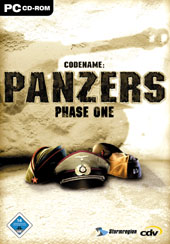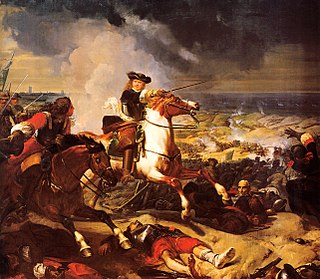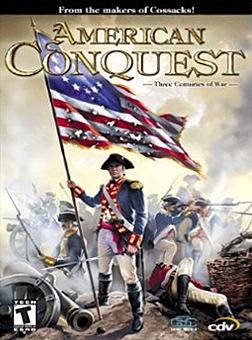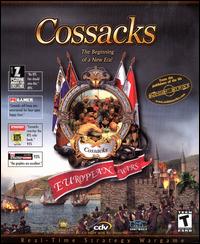
The sipahi were professional cavalrymen deployed by the Seljuk Turks and later by the Ottoman Empire. Sipahi units included the land grant–holding (timar) provincial timarli sipahi, which constituted most of the army, and the salaried regular kapikulu sipahi, or palace troops. However, the irregular light cavalry akıncı ("raiders") were not considered to be sipahi. The sipahi formed their own distinctive social classes and were rivals to the janissaries, the elite infantry corps of the sultans.

A musketeer was a type of soldier equipped with a musket. Musketeers were an important part of early modern warfare, particularly in Europe, as they normally comprised the majority of their infantry. The musketeer was a precursor to the rifleman. Muskets were replaced by breech loading rifles as the almost universal firearm for modern armies during the period 1850 to 1870. The traditional designation of "musketeer" for an infantry private survived in the Imperial German Army until World War I.

Don Cossacks or Donians, are Cossacks who settled along the middle and lower Don. Historically, they lived within the former Don Cossack Host, which was either an independent or an autonomous democratic republic in present-day Southern Russia and parts of the Donbas region of Ukraine, from the end of the 16th century until 1918. As of 1992, by presidential decree of the Russian Federation, Cossacks can be enrolled on a special register. A number of Cossack communities have been reconstituted to further Cossack cultural traditions, including those of the Don Cossack Host. Don Cossacks have had a rich military tradition - they played an important part in the historical development of the Russian Empire and participated in most of its major wars.

Codename: Panzers – Phase One is a 2004 real-time tactics video game developed by the Hungarian studio StormRegion and published by cdv Software Entertainment. It is set during World War II.

Early modern warfare is the era of warfare during early modern period following medieval warfare. It is associated with the start of the widespread use of gunpowder and the development of suitable weapons to use the explosive, including artillery and firearms; for this reason the era is also referred to as the age of gunpowder warfare.

Line infantry was the type of infantry that formed the bulk of most European land armies from the mid-17th century to the mid-19th century. Maurice of Nassau and Gustavus Adolphus are generally regarded as its pioneers, while Turenne and Montecuccoli are closely associated with the post-1648 development of linear infantry tactics. For both battle and parade drill, it consisted of two to four ranks of foot soldiers drawn up side by side in rigid alignment, and thereby maximizing the effect of their firepower. By extension, the term came to be applied to the regular regiments "of the line" as opposed to light infantry, skirmishers, militia, support personnel, plus some other special categories of infantry not focused on heavy front line combat.

Horse artillery was a type of light, fast-moving, and fast-firing field artillery that consisted of light cannons or howitzers attached to light but sturdy two-wheeled carriages called caissons or limbers, with the individual crewmen riding on horses. This was in contrast to other forms of field artillery which may also be horse-drawn but were heavier and whose gunners either marched on foot or were transported seated on the gun carriage, wagons or limbers. Horse artillery units provided highly mobile fire support especially to cavalry units, and existed in armies in Europe, the Americas, and Asia, from the early 17th to the mid-20th century.

American Conquest is a real-time strategy video game developed by GSC Game World and published by CDV Software Entertainment. It is set between the 15th and the early 19th centuries in the American continents. There is also an expansion pack produced for American Conquest, called American Conquest: Fight Back and a gold edition, which has both the original and expansion pack bundled together. The latest installment in the series is American Conquest: Divided Nation. All three titles are available together as the American Conquest Chronicles.

Pike and shot was a historical infantry tactical formation that first appeared during the late 15th and early 16th centuries, and was used until the development of the bayonet in the late 17th century. This type of formation combined soldiers armed with pikes and soldiers armed with arquebuses and/or muskets. Other weapons such as swords, halberds, and crossbows were also sometimes used. The formation was initially developed by the Holy Roman Imperial (Landsknechte) and Spanish (Tercios) infantries, and later by the Dutch and Swedish armies in the 17th century.

The Polish–Ottoman War of 1672–1676 was fought by the Polish–Lithuanian Commonwealth and the Ottoman Empire. It ended with the Treaty of Żurawno, by which the Commonwealth ceded control of most of its territories in Central Ukraine to the Ottomans. It was a prelude to the Great Turkish War.

The Imperial Russian Army or Russian Imperial Army was the armed land force of the Russian Empire, active from 1721 until the Russian Revolution of 1917. It was organized into a standing army and a state militia. The standing army consisted of regular troops and two forces that served on separate regulations: the Cossack troops and the Muslim troops.
The types of military forces in the Napoleonic Wars represented the unique tactical use of distinct military units, or their origin within different European regions. By and large the military forces during the period had not changed significantly from those of the 18th century, although their employment would differ significantly.

Cossacks II: Napoleonic Wars is a real-time strategy game and the second installment in the Cossacks series, released in 2005. This game focuses exclusively on the Napoleonic era, meaning it has a much shorter time span than others in this series, which spanned several centuries. Therefore, fewer technologies can be researched than in other Cossacks games, and there aren't as many different unit types for each country as before. On the other hand, Cossacks II allows a large number of units to be trained and it has many tactical options and an updated graphical engine.

The Royal Armed Forces were the armed forces of the Burmese monarchy from the 9th to 19th centuries. It refers to the military forces of the Pagan Kingdom, the Kingdom of Ava, the Hanthawaddy Kingdom, the Toungoo dynasty and the Konbaung dynasty in chronological order. The army was one of the major armed forces of Southeast Asia until it was defeated by the British over a six-decade span in the 19th century.

The military of the Polish–Lithuanian Commonwealth consisted of two separate armies of the Kingdom of Poland's Crown Army and the Grand Duchy of Lithuania's Grand Ducal Lithuanian Army following the 1569 Union of Lublin, which joined to form the bi-conderate elective monarchy of the Polish–Lithuanian Commonwealth. The army of each country was commanded by their respective Hetmans. The most unique formation of both armies were the Winged hussars. The Polish–Lithuanian Commonwealth Navy never played a major role and ceased to exist in the mid-17th century.
Video gaming in Ukraine began to emerge in the 1990s and is slowly growing. Subsequently, in the 2000s, several major video game series started appearing.
The Battle of Kostiantyniv was fought between the Zaporozhian Host and the Polish–Lithuanian Commonwealth as a part of the Khmelnytskyi Uprising. Near the site of the present-day town of Starokostiantyniv on the Ikopot and Sluch Rivers in Ukraine, a forces of the Zaporozhian Cossacks and the Ukrainian peasants under the command of Maksym Kryvonis and Ivan Hyria attacked the Polish–Lithuanian army under the command of Jeremi Wiśniowiecki, Janusz Tyszkiewicz Łohojski and Władysław Dominik Zasławski.

Sudden Strike, also known in Russia as Confrontation III, is a real-time tactics computer game set in World War II and the first game in the Sudden Strike series. Released in 2000, the game was developed by Fireglow based in Russia and published by CDV Software of Germany. In Russia, the game was marketed as a sequel to the 1996 real-time tactics game Counter Action, made by many of the same developers.

Cossacks 3 is a real-time strategy video game for Microsoft Windows by the Ukrainian developer GSC Game World. It is a remake of the 2001 game Cossacks: European Wars and is once again set in 17th and 18th century Europe.

The Royal Siamese Armed Forces were the armed forces of the Thai monarchy from the 12th to 19th centuries. The term refers to the military forces of the Sukhothai Kingdom, the Ayutthaya Kingdom, the Thonburi Kingdom and the Early Rattanakosin Kingdom in chronological order. The army was one of the major military forces of Southeast Asia. With a reform into a new Western-style army in 1852, the Royal Siamese Army became a new European-trained military force.


















